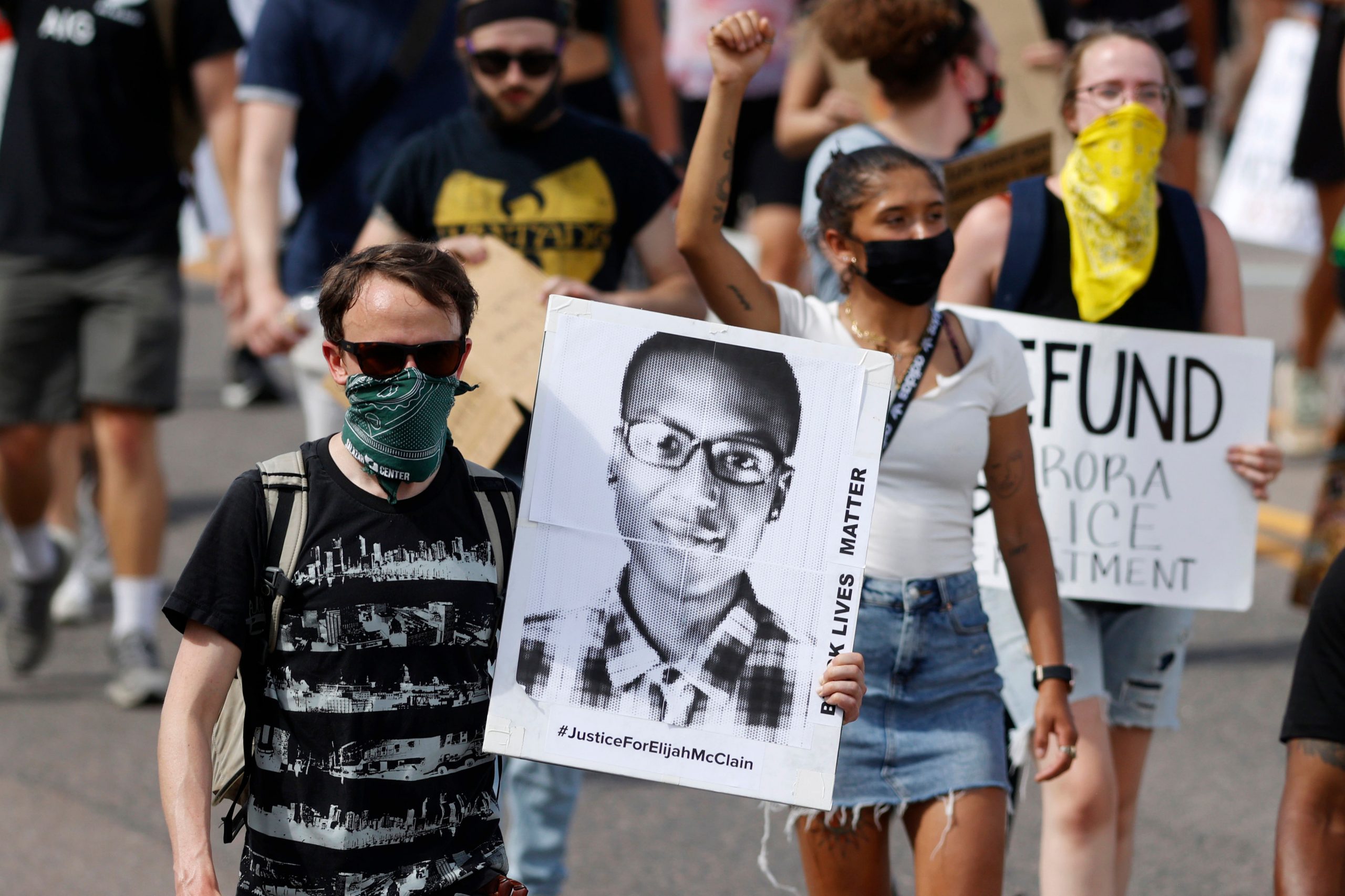A Black man died after a confrontation with police in a Denver neighbourhood in 2019 because he was administered with a powerful sedative after being violently restrained, according to an amended autopsy report made public on Friday.
According to the report, despite the revelation, the death of Elijah McClain, a 23-year-old massage therapist, was still categorised as unspecified and not a homicide. After being forced to stop by Aurora police for “being suspicious,” McClain was positioned in a neck brace and injected with ketamine. He was unarmed.
Also read: Who was Elijah McClain?
The preliminary autopsy report, which was written immediately after his death in August 2019, did not draw a conclusion as to how he died or the type of death, such as natural, accidental, or homicide. That was a key reason why prosecutors initially decided not to press charges.
However, after the death of George Floyd in 2020 drew renewed attention to the case, a state grand jury indicted three officers and two paramedics on manslaughter and reckless homicide charges last year. During the national atonement over racism and police brutality, it was a rallying cry.
The five alleged have not yet entered pleas, and their attorneys have not publicly commented on the charges.
Dr. Stephen Cina, a pathologist, concluded in the updated report, completed in July 2021, that the ketamine dosage given to McClain, which was significantly greater than recommended for anyone his size, “was too much for this individual and it resulted in an overdose, even though his blood ketamine level was consistent with a ‘therapeutic’ blood concentration.”
Also read: Pinellas County, Florida: Suspect in hit-and-run wreck that killed officer Michael Hartwick at large
He said he couldn’t rule out modifications in McClain’s blood chemistry, such as a rise in lactic acid, caused by his exertion while being restrained by police, but he deduced there was no indication that police injuries caused his death.
“I believe that Mr. McClain would most likely be alive but for the administration of ketamine,” said Cina, who noted that body camera footage shows McClain becoming “extremely sedated” within a few minutes of being given the drug.
Cina acknowledged that other reasonable pathologists with different experience and training may have labeled such a death, while in police custody, as a homicide or accident, but that he believes the appropriate classification is undetermined.
Qusair Mohamedbhai, attorney for McClain’s mother, Sheneen McClain, declined a request for comment.
Also read: Washington Monument vandalised with red paint, one person in custody: Police
Dr. Carl Wigren, a forensic pathologist in Washington state, questioned the report’s focus on ketamine, saying all the available evidence — including a highly critical independent review of McClain’s death commissioned by Aurora last year — point to McClain dying as a result of compressional asphyxia, a type of suffocation, from officers putting pressure on his body while restraining him. He was struck by one passage in the city’s review citing the ambulance company’s report that its crew found McClain lying on the ground on his stomach, his arms handcuffed behind his back, his torso and legs held down, with at least three officers on top of him.
According to the report, that scene was not caught on body camera footage, but much of what occurred between officers was not because the officers’ cameras were turned off soon after McClain was confronted. The cameras did not stop recording where they fell and people talking.
According to Wigren, just because McClain, who claimed he couldn’t breathe, could be heard making some statements on the video does not mean he was able to fully breathe. Ketamine, which decelerates breathing, could have aggravated McClain’s condition, but Wigren believes it did not cause his death.
Also read: Paul Pogba’s brother, Mathias, might be charged in extortion case
Dr. Deborah G. Johnson of Colorado, another pathologist, said McClain’s rapid response to ketamine implies that it was a cause of McClain’s death, but that its use cannot be isolated from the impact that the police confinement may have had. McClain may have had difficulty breathing due to the restraint, and possessing less oxygen in your system would cause the tranquillizer to take effect faster, she explained.
Both believed the death could have been classified as a homicide — a death caused by the actions of others — which, they noted, is a separate decision from determining whether someone should be charged with a crime for causing it.
McClain received a ketamine overdose, according to Johnson, who noted that the paramedics were working at night, when it is difficult to judge someone’s weight.
“Was that a mistake to send someone to prison for? I don’t think so,” she said.
Also read: Wisconsin man, wanted for child pornography, dies after armed confrontation with state troopers
The revised autopsy report was made public on Friday as a result of a court order in a lawsuit filed by Colorado Public Radio, which was joined by other media organisations, including The Associated Press. After learning that the report had been updated, Colorado Public Radio filed a lawsuit against the coroner, arguing that it should be made accessible under the state’s public records law.
Coroner Monica Broncucia-Jordan said she couldn’t release it because it contained classified information grand jury information and doing so would violate the oath she took last year not to share it.
But Adams County District Judge Kyle Seedorf ordered the coroner to release the updated report by Friday, and a Denver judge who oversees state grand jury proceedings, Christopher Baumann, ruled Thursday that grand jury information did not have be redacted from the updated report.
Also read: Who is Janelle Zielinski? Detroit cop quits after OnlyFans account found
Cina noted that the report was updated based on extensive body camera footage, witness statements and records that he did not have at the time of the original autopsy report, which were not made available to the coroner’s office at all or in their entirety before. Last year, Cina and Broncucia-Jordan received some material that was made available to the grand jury last year, according to court documents, but they did not say what exactly that material was.
McClain’s death fueled renewed scrutiny about the use of the ketamine and led Colorado’s health department to issue a new rule limiting when emergency workers can use it.
Last year, the city of Aurora agreed to pay $15 million to settle a lawsuit brought by McClain’s parents. The lawsuit alleged the force officers used against McClain and his struggle to survive it dramatically increased the amount of lactic acid in his system, leading to his death, possibly along with the large dose of ketamine he was given.
The outside investigation commissioned by the city faulted the police probe into McClain’s arrest for not pressing for answers about how officers treated him. It found there was no evidence justifying officers’ decision to stop McClain, who had been reported as suspicious because he was wearing a ski mask as he walked down the street waving his hands. He was not accused of breaking any law.
Police reform activist Candice Bailey had mixed emotions about seeing the amended autopsy.
“I do believe that it does get us a step closer to anything that is a semblance of justice,” said Bailey, an activist in the city of Aurora who has led demonstrations over the death of McClain.
But Bailey added that she is “extremely saddened that there is still a controversy around whether or not the EMTs and officers should be held responsible for what they did, and as to whether or not this was actually murder.”







